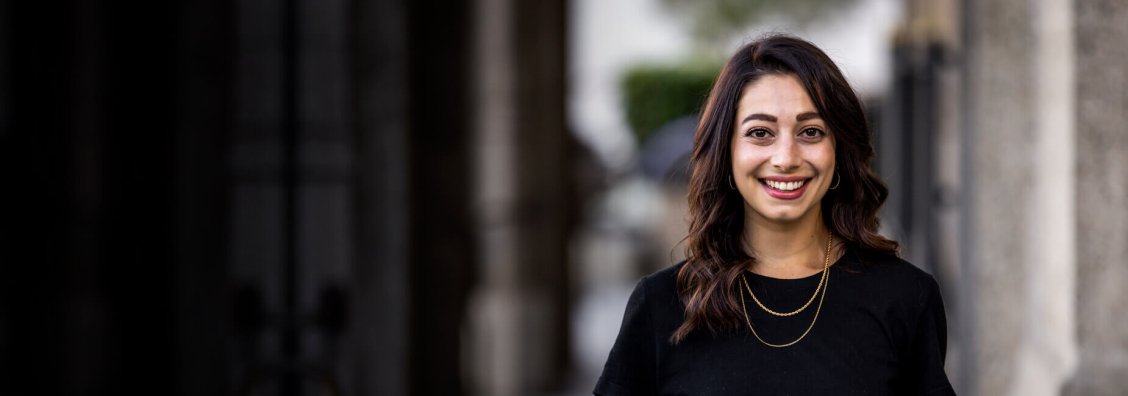Noa Gutterman
Director of Marketing

This Q&A was conducted when Noa was a Director of Marketing at VSCO. Currently, Noa is a VP of User Acquisition at MistPlay.
Noa Gutterman leads product, life cycle and performance marketing at VSCO. After working in marketing and communications for several news platforms, Noa moved to the Bay Area to run growth marketing at HER, the largest dating app for queer women. Pursuing her quest for further digital marketing knowledge, Noa later joined Metric Theory, where she built a mobile-first marketing team. Now, as VSCO’s Director of Marketing, Noa drives user acquisition for one of the largest photo/video editing apps on the market.
In your own words, tell us about the apps that you manage?
VSCO provides photo and video tools, made by creators for creators. It’s a platform free from follower counts, comments, and ads—a space to safely and authentically create content. The app has features like adding text to photos or presets based on Kodak’s iconic “Kodachrome” film stock. VSCO makes creation fun and meaningful for creators at all levels of artistic experience and ages.
How did you get started in mobile marketing?
I started in mobile marketing almost by accident! After completing a Fulbright Research Fellowship in Ethiopia, I worked on marketing and communications at an international development news organization. Digital advertising through paid social channels (Facebook, Instagram) became widely utilized, and I jumped at the chance to learn a new skill set in an emerging field.
After several years working in digital advertising for news outlets, I moved to SF to run growth marketing at HER, the largest dating app for queer women. Later, I shifted to a digital marketing agency to level up my skills across industries and verticals and build out the agency’s first mobile team. In June, I pivoted to VSCO where I am Director of Marketing.
What do you like most about mobile marketing?
It’s never dull, and it’s always changing and developing. From new channels to different strategies and best practices, there is always something new on the horizon. When I look back on the last 6+ years in mobile marketing, I can’t believe how far the industry has grown—identifying target audiences, finding audiences across various platforms, and presenting potential users with reasons why they need your app.
What does it take to succeed in mobile marketing?
Be a strategic thinker, excelling in both data-driven work and creative experimentation. You have to think on your feet, adapt to changes in platforms and across verticals, and stay on top of trends in the advertising landscape. Never stop learning—whether it’s emerging channels like TikTok or new advertising formats like Facebook’s recently announced automated app ads.
What strategies work best to convert installs into engaged app users?
Test at a small scale across multiple tactics and optimize for best-performing audiences and value propositions. This looks different for every app, but at VSCO, we think about how we can encourage users to develop a healthy creative habit, meaning that creating photos or videos on VSCO should become a part of your daily routine. We prioritize this idea across our entire user journey so that users understand the VSCO brand and are given a clear call-to-action at every stage of their onboarding experience.
In the past year, what is one tip you can share which made the biggest performance difference for your UA strategy?
Don’t copy what your competitors are doing. Be bold with your testing strategy—whether that’s new audiences, channels, or tactics, out of the box tests are the best way to truly evaluate if something new is the right fit for your app.
What advice can you offer marketers to re-engage mobile app users successfully?
Figure out what regularly brings users back to your app and apply that behavioral pattern across all user segments. If your goal is to re-engage audiences for monetization, determine the value propositions resonating with each user segment. It’s essential to understand how different value propositions work for varying audience segments. Identifying high LTV audiences is the first step to successfully re-engaging mobile app users.
What’s your top tip when it comes to mobile ad creative?
Looking forward to 2021, ad creative is the new audience targeting. With upcoming changes in the mobile marketing landscape, creative is more important than ever. I recommend building out evergreen and product-focused gif and video creatives that highlight your app’s specific use cases or features. I also recommend testing new mobile-first formats to improve testing velocity and your ability to optimize and scale campaigns quickly.
What is your go-to resource for keeping up with the mobile ad tech industry?
I like reading articles from our ad tech partners like Braze, AppsFlyer, and Liftoff. Additionally, I connect with other mobile marketers at conferences, whether in-person or virtually. Learning from other fellow marketers is a great way to learn about new strategies and trends.


